Samsung WB650 Review
Samsung WB650
Can Samsung beat the Panasonic TZ10 with this GPS-equipped long-zoom compact?
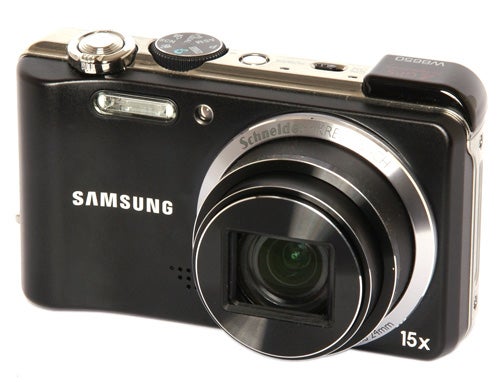
Verdict
Pros
- Longer than average zoom
- Accurate GPS
- Sharp monitor
- Good battery life
- Good build quality
Cons
- Image quality not quite as good as rivals
- Ugly design
- Quite heavy
Key Specifications
- Review Price: £249.99
- 12.1 megapixel
- 15x zoom lens(28-60mm)
- GPS
- 3in AMOLED screen
- 720p video with stereo audio
As I’ve remarked before, the long-zoom compact or “travel camera” is one of the most fiercely competitive sectors of the digital camera market, with most of the major manufacturers fielding rival models sporting a range of advanced features. Although the format was first introduced by Ricoh with its R-series cameras in 2005, the current yardstick for travel cameras is Panasonic’s TZ series, particularly the advanced TZ10 (£250), which features a 12MP sensor, a 12x zoom lens, HD video recording with stereo audio and a built-in GPS receiver. Other recent long-zoom compacts include the Ricoh CX3 (£280), the Fujifilm F70EXR (£160), the Olympus mju 9000 (£175), the Canon SX210 IS (£240) and the Sony DSC-HX5 (£290).
Samsung’s previous entry into this field was the WB550 (£170), launched late last year, which while a very competent camera looked a bit pale compared to the advanced features of arch-rival Panasonic’s market-leading flagship. Not to be outdone Samsung has launched a new model in the WB series, the WB650, which which matches or exceeds the TZ10 in all areas of its specification.
Priced at a competitive £250 (but likely to fall in price), the 12-megapixel WB650 features a powerful but compact 15x zoom lens, 720p HD video with stereo sound, optional manual exposure controls, built-in GPS geotagging, and an ultra-sharp three-inch high-tech AMOLED monitor screen. It’s a very impressive specification to say the least, and is bound to have Panasonic’s boffins scurrying back to their drawing boards.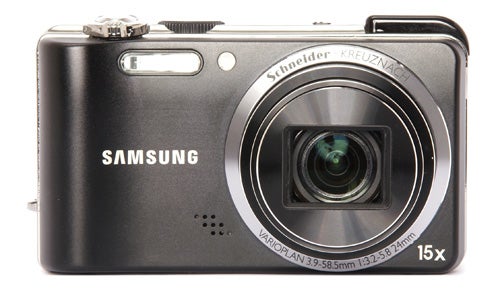
The WB650 is, it has to be said, not a particularly attractive camera to look at. The overall shape of the body is very similar to the WB550, but with a black plastic lump stuck on the top to house the GPS antenna. It’s quite a large and heavy camera even by long-zoom compact standards, measuring 106 x 62 x 35mm and weighing 238g fully loaded, several millimetres larger and 20g heavier than the TZ10. It’s solidly made though, and the chunky body is comfortable to hold thanks to a decent-sized handgrip and a textured thumbgrip area on the back. The body is mostly plastic with a metal front panel, and is available in only one colour scheme, the matt black with chrome trim seen here.
The control layout of the WB650 is slightly different to the WB550, with the shutter button positioned further forward and angled slightly for greater comfort, while the mode dial has moved a little to the left. The controls are sensibly laid out and accessible, although as usual with Samsung the buttons are very small and most are labelled with silver-on-silver embossed symbols that are hard to see in low light. There is a separate button to start video to start video recording, with a delay of only about two and a half seconds. One useful feature is a separate switch to turn the GPS unit on or off, helping to limit the battery life problems that plague the Panasonic TZ10.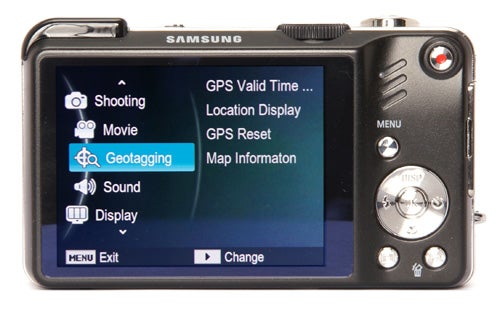
The WB650 is well equipped with features and options, including optional manual exposure modes, a wide range of picture adjustments, some digital filter effects and automatic contrast balance, which boosts shadow detail in high contrast situations. The menu system controlling all of these is clear and comprehensive, although its habit of jumping from a full-screen menu to a sidebar overlay is a bit disconcerting.
The key feature of the WB650 is its 15x zoom f/3.2 – f/5.8 Schneider-Kreuznach lens, with a focal length range equivalent to 24-360mm. This is the longest zoom range of any comparable camera, all the more remarkable because it is no less compact than the 10x zoom of the WB550, retracting completely into the camera body when powered down. It has a very good optical image stabilisation system, and I found I was able to take consistently steady shots at full zoom at shutter speeds of 1/15th of a second, which is an impressive performance.
GPS is already a common feature on mobile phones, and is appearing on more and more cameras. It is used for “geotagging”, locating travel pictures on applications such as Google Earth or websites such as Locr or 100BestViews. The GPS system on the WB650 is very good, picking up a satellite signal in approximately 30 seconds and holding it well. It seems to be quicker, more accurate and more reliable than the GPS in the TZ10. The WB650 also uses its GPS for a built-in map feature, which can show your location on a map displayed on the monitor. The maps have to be downloaded from Samsung’s website and manually installed on the SD card, a procedure which is fairly complicated and not helped by Samsung’s usual terrible translation of the instructions. However once you’ve got everything into the right folders it works smoothly and the map location is accurate, although the level of local detail is a bit limited. The map can be zoomed in and out, street names and road numbers are shown, and there symbols showing locations where you have taken photos, as well as for things like doctor’s surgeries and train stations, but some of the symbols are not obvious and are not explained in the manual.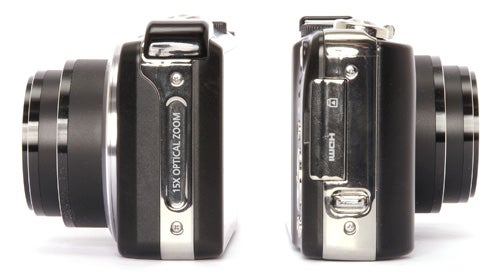
Another stand-out feature is the monitor, which is a gorgeous three-inch AMOLED screen with a pin-sharp resolution of 614,000 dots, better than most DSLR screens. AMOLED uses less power than conventional LCD technology, and is also stronger, brighter and less prone to sun glare. The WB650’s screen works extremely well even in bright sunlight, and has a viewing angle approaching 180 degrees.
The WB650 can record HD video at a resolution of 1280 x 720 pixels and 30 frames per second, recording in the popular H.264 format used in many web applications. Audio is recorded in stereo via two microphones located on the top panel. The optical zoom can be used while recording, with the option to mute audio recording while zooming so that the motor noise doesn’t appear on the soundtrack. There are a number of menu options for video recording including picture styles and digital filter effects.
Like most recent Samsung compacts the WB650’s overall performance is very good. It starts up and is able to take a picture in less than three seconds, which is a creditable performance. In single-shot mode its shot-to-shot time is approximately 2.1 seconds, which is also quicker than average, especially for a big high-tech camera. In continuous shooting mode it can shoot at a consistent one frame per second apparently until the memory card is full. There is an audio cue to let you know when a picture is taken, but the monitor screen remains blank after the first shot, so tracking moving subjects is a bit of a guessing game.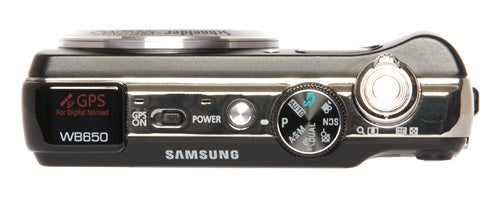
The autofocus system is also very good, focusing quickly and accurately in all lighting conditions. Its low light performance is much better than some previous Samsung models, and will focus reliably in dim twilight. For lower light conditions the WB650 has an AF assist lamp with a range of about three metres.
One of the few problems with the otherwise excellent Panasonic TZ10 was its very poor battery life, especially when using the GPS system. Samsung must have noted this with some satisfaction, because the WB650 has no such drawback. It is powered by a chunky 1130mAh Lithium Ion battery with excellent duration, no doubt thanks in part to the lower power consumption of the AMOLED screen. I took the WB650 on holiday with me two weeks ago, charging it up before I left. I used the GPS function extensively and took around 200 shots, and even now the battery indicator is still showing two out of three bars. Samsung makes no specific claim for the number of shots on a single charge, but suffice it to say it’s enough.
One problem area for Samsung in the past has been image quality, and sadly the WB650 also has some issues in this area. The problem is the massively heavy-handed image processing, which leaves images looking as though they have been blurred and then over-sharpened. Whether this is part of the noise reduction system or just general sharpening I’m not sure, but it does rob images of a lot of potential quality. It’s pity, because the lens is very good, with very little optical distortion or chromatic aberration at any focal length, and the overall level of recorded detail is excellent. Colour reproduction is very good, and even dynamic range is better than average. Noise control is, to be fair, about average for the class. At lower ISO settings it’s certainly not a patch on the superb low-ISO results of the TZ10, but at 400 ISO and higher there’s really not much in it. If only Samsung could sort out its image processing, Panasonic and the other manufacturers would be in real trouble.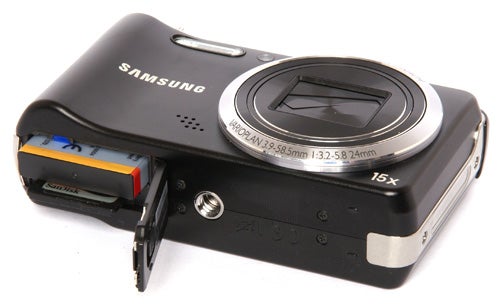
”’Verdict”’
In many ways the Samsung WB650 is a better camera than the Panasonic TZ10. It has a better zoom range, a more accurate GPS system, a sharper monitor and crucially longer battery life. Build quality, design and handling are all excellent, but it can’t quite match its rival on low ISO image quality.
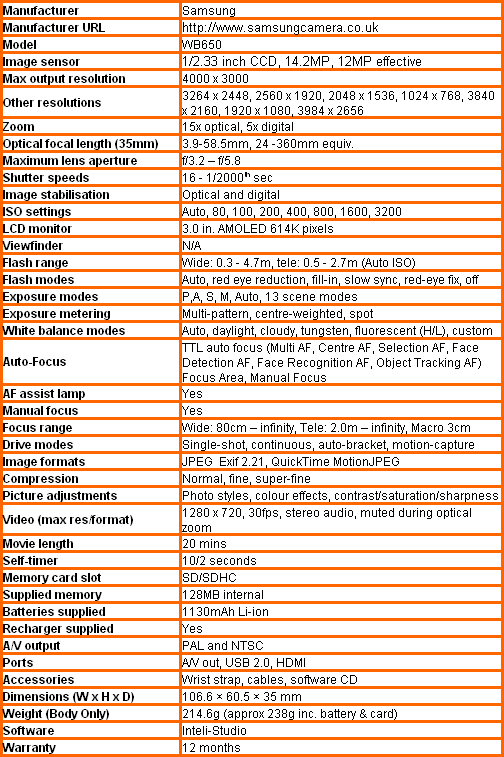
”Over the next few pages we show a range of test shots. On this page the full size image at the minimum and maximum ISO settings have been reduced to let you see the full image, and a series of full resolution crops have taken from original images at a range of ISO settings to show the overall image quality. These pictures were taken indoors using shaded natural light. ”
—-
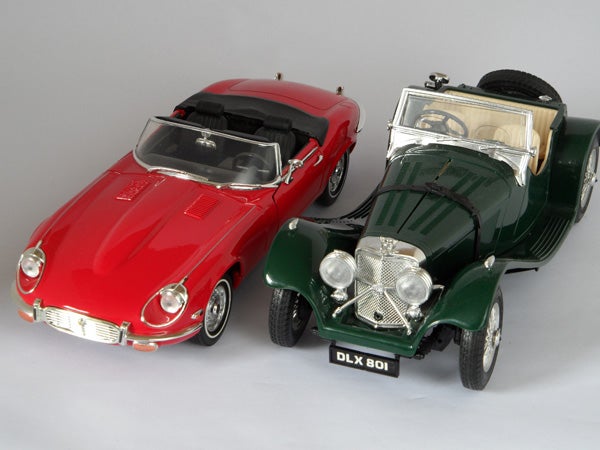
This is the full frame at 80 ISO.
—-
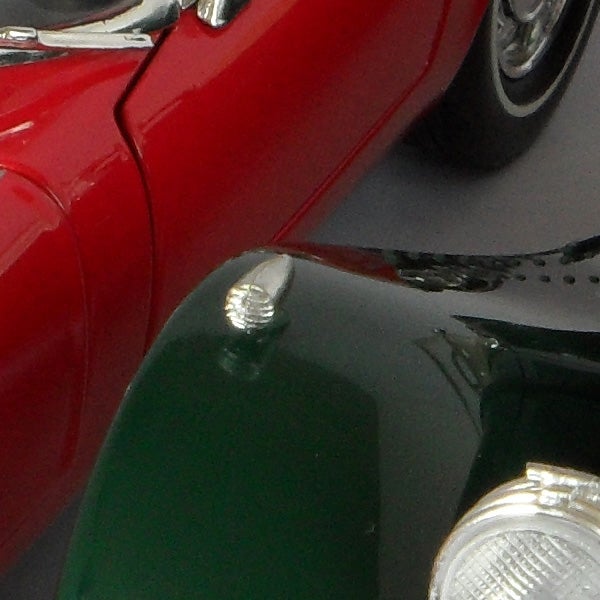
The image quality at 80 ISO would print well, but compare it with the Panasonic TZ10.
—-
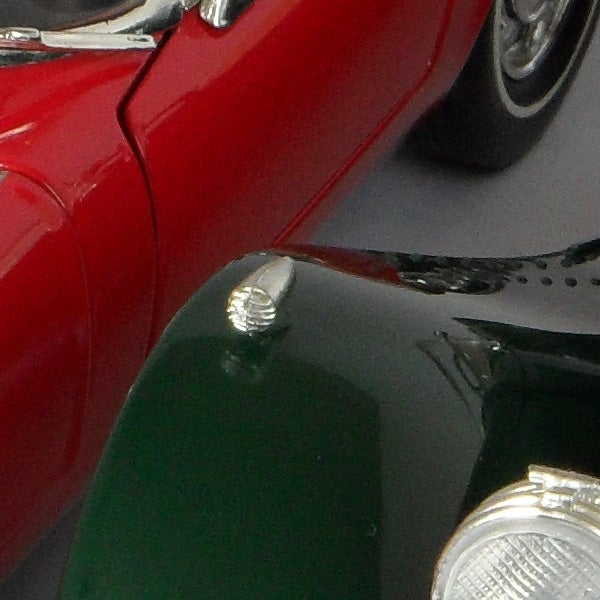
The image quality at 100 ISO is still OK, but looks over-processed.
—-
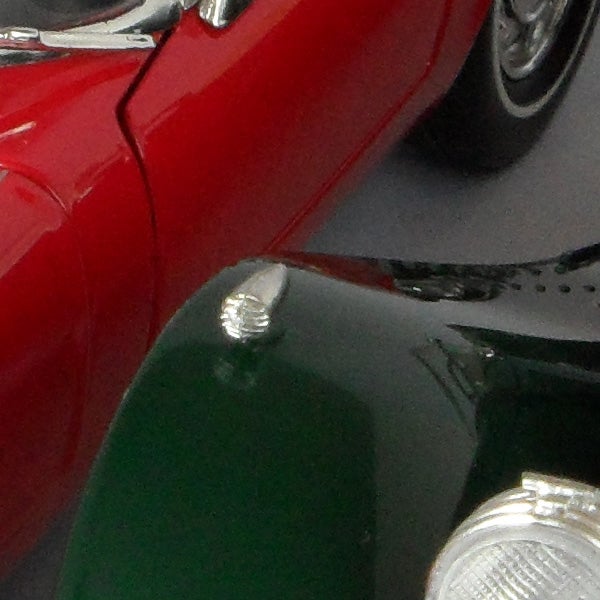
There is some visible noise reduction at 200 ISO.
—-
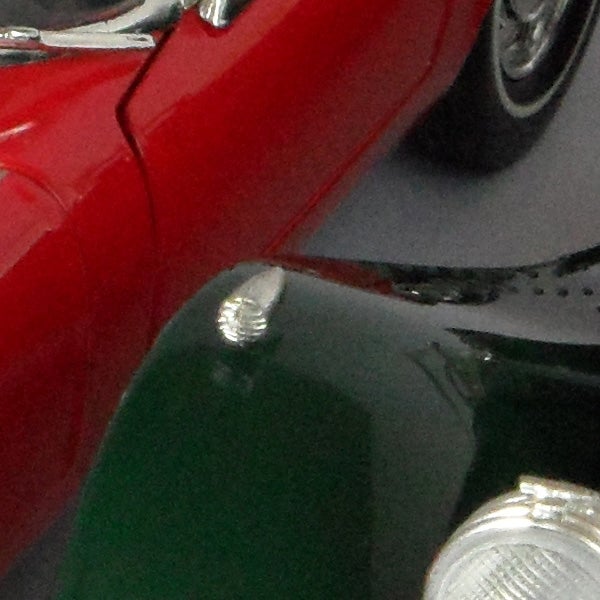
At 400 ISO the noise control has reduced the level of detail.
—-
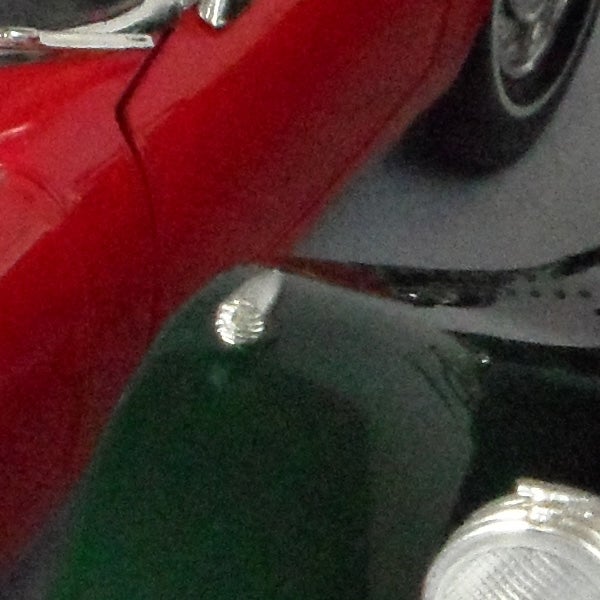
Colour and luminance noise is clearly visible at 800 ISO.
—-
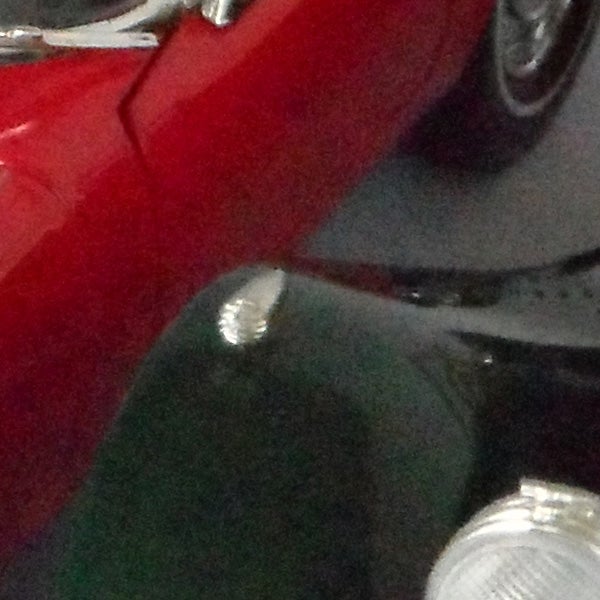
Colour gradation and detail are greatly reduced at 1600 ISO.
—-
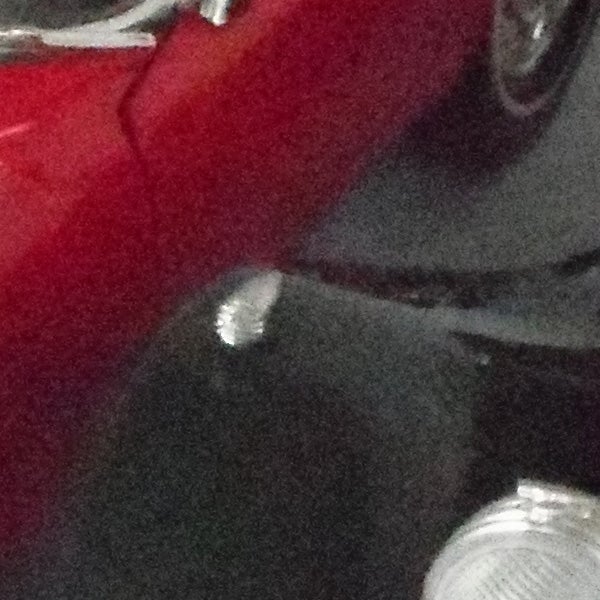
Image quality at the maximum 3200 ISO is pretty ropey.
—-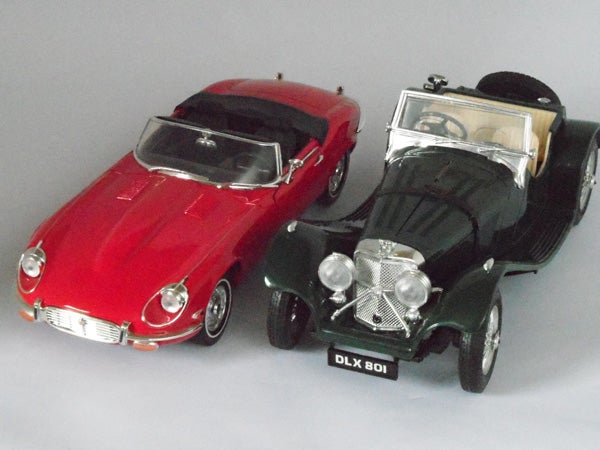
This is the full frame at 3200 ISO.
—-
”A range of general test shots are shown over the next two pages. In some cases, the full size image has been reduced for bandwidth purposes, and a crop taken from the original full resolution image has been placed below it to show the overall image quality. Some other pictures may be clicked to view the original full-size image. ”
—-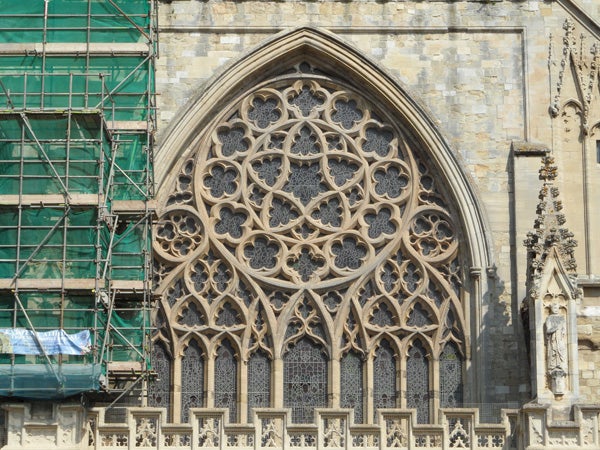
Here’s the usual detail test shot of the West Window of Exeter Cathedral, for you to compare with other cameras. See below for a full res crop, or click to see the whole picture. The downloadable file is approximately 5.8MB.
—-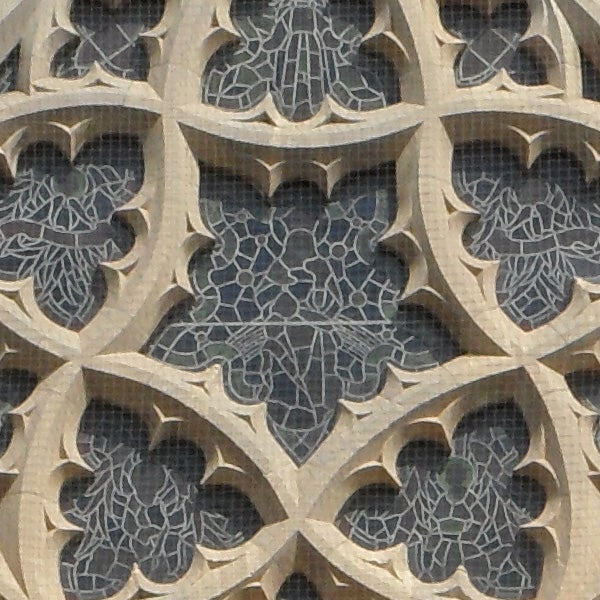
The level of recorded detail is very good, but the image looks over-sharpened.
—-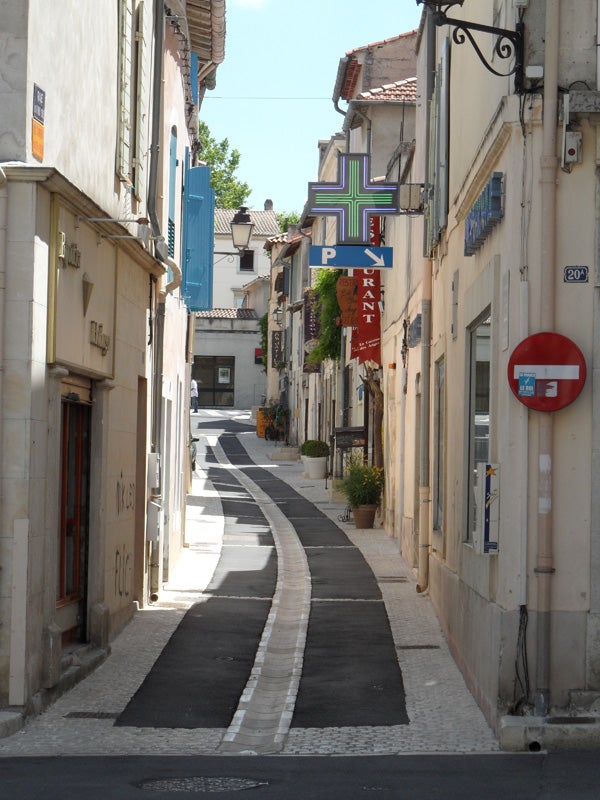
The Schneider-Kreuznach lens performs brilliantly, with no visible distortion at any focal length.
—-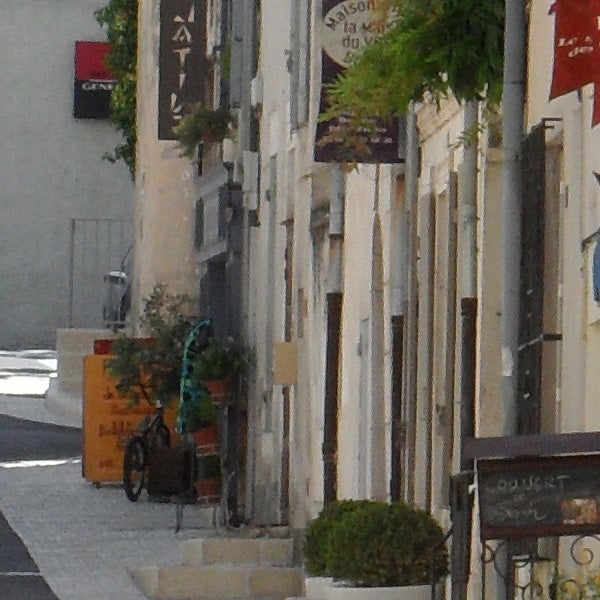
Centre detail and sharpness are very good, but again the image processing is sub-standard.
—-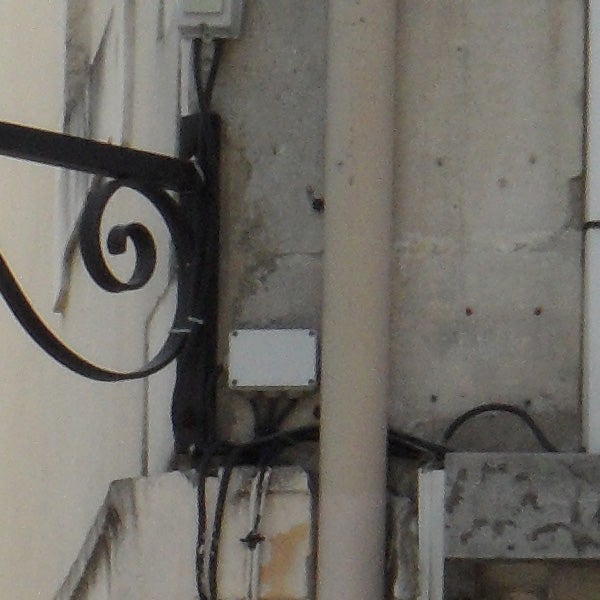
Corner sharpness is excellent.
—-
”Here are some general test shots to help evaluate the camera’s overall image quality, including dynamic range, colour rendition and the zoom range of the lens. Some pictures may be clicked to download the full size original image. ”
—-
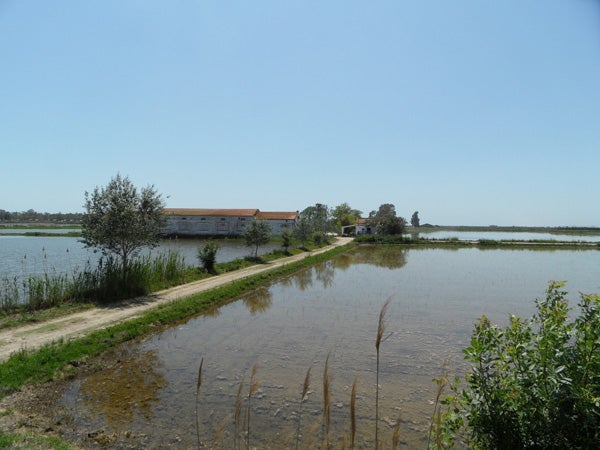
The wide angle end of the zoom range is equivalent to 24mm, ideal for panoramic scenes. This is a birdlife research station on the Ebro Delta in Catalonia.
—-
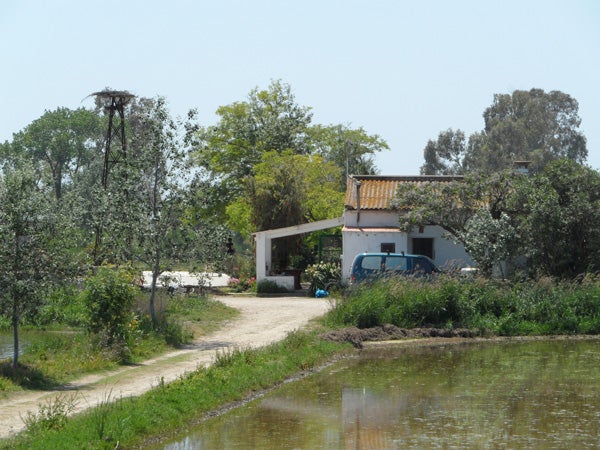
Taken from the same spot as the above shot, this shows the 360mm-equivalent telephoto end.
—-
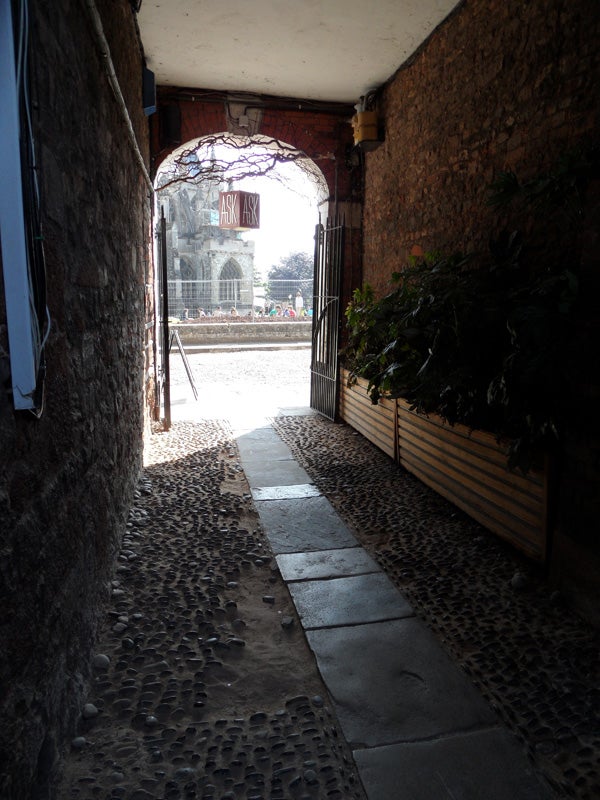
The dynamic range is pretty good even without the ACB feature.
—-
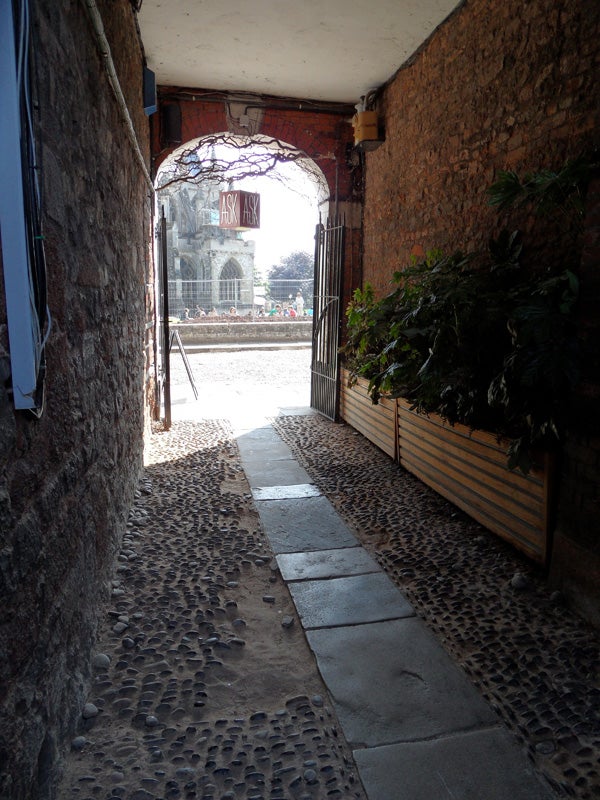
With ACB switched on the shadow detail is greatly improved.
—-
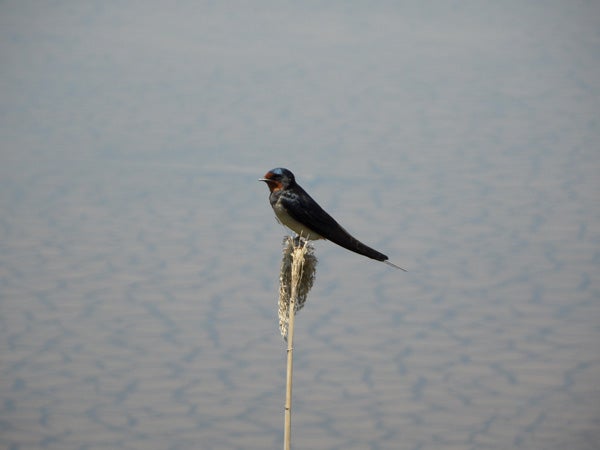
The powerful zoom and excellent image stabilisation are great for a bit of birdwatching.
—-
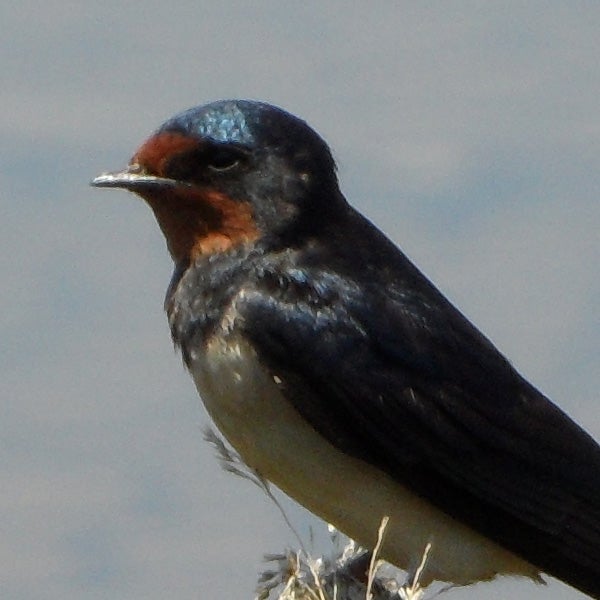
This is a full-size crop from the above image.
—-
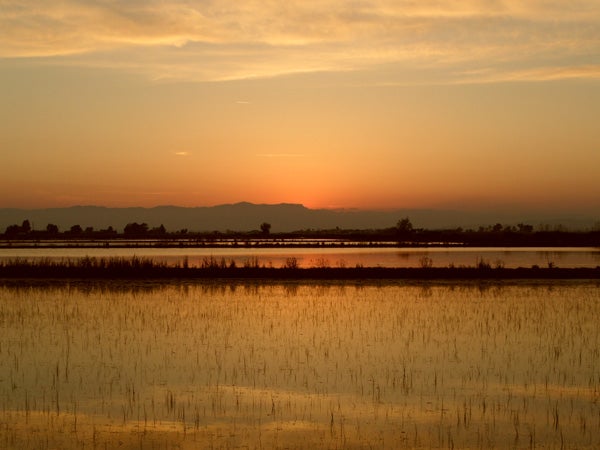
Colour reproduction is superb. This is a sunset over the Ebro Delta.
—-
Trusted Score
Score in detail
-
Value 9
-
Image Quality 7
-
Build Quality 8
Features
| Camera type | Digital Compact, Digital SLR |
| Megapixels (Megapixel) | 12 Megapixel |
| Optical Zoom (Times) | 15x |
| Image Stabilisation | Optical, Electronic |
| LCD Monitor | 3 in |
| Flash modes | Auto Flash, Flash OFF, Flash ON, Red-eye Reduction |
| Video (max res/format) | 1280 x 720, 640 x 480 |
| Memory card slot | Secure Digital (SD) Card, Secure Digital High Capacity (SDHC) Card |

